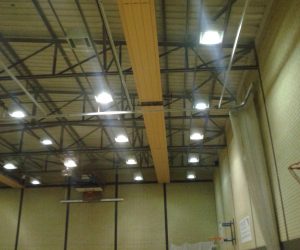Clare C., a regular reader of my energy-management bulletins, was perplexed when she started researching the cost advantages of LEDs as replacement for metal halide (MH) high-bay fittings. She discovered that MH lamps have luminous efficacies very similar to LEDs with both, broadly speaking, yielding about 100 lumens per watt. Certainly she wasn’t going to get the 50% saving she was after, and she asked my opinion.
There are a couple of factors that would tip the balance in favour of LEDs. Firstly, she needed to account for the fact that unlike LEDs, MH lamps need control gear which would add some parasitic load (say 20 watts on a 400-watt lamp). Secondly, LEDs are more directional and can deliver all their output more effectively to the working space; MH lamps are omnidirectional and need reflectors which may lose some of the light output. So in terms of useful light output per circuit watt, a well-specified and correctly-installed LED fitting may have a moderate advantage.
But the big gain is in controllability. MH lamps have a warm-up time measured in minutes and a ‘restrike’ time (after turning off) which is longer still, to allow them to cool before being turned on again. This is common to all high-intensity discharge (HID) lamps. It does not matter how long the delay is; it discourages the use of automatic control so HID lamps are often turned on well before they are needed, and then stay on for the duration. LEDs by contrast can be turned off at will and as soon as they are needed again, they come on. This is where Clare will might get her 50% saving.
